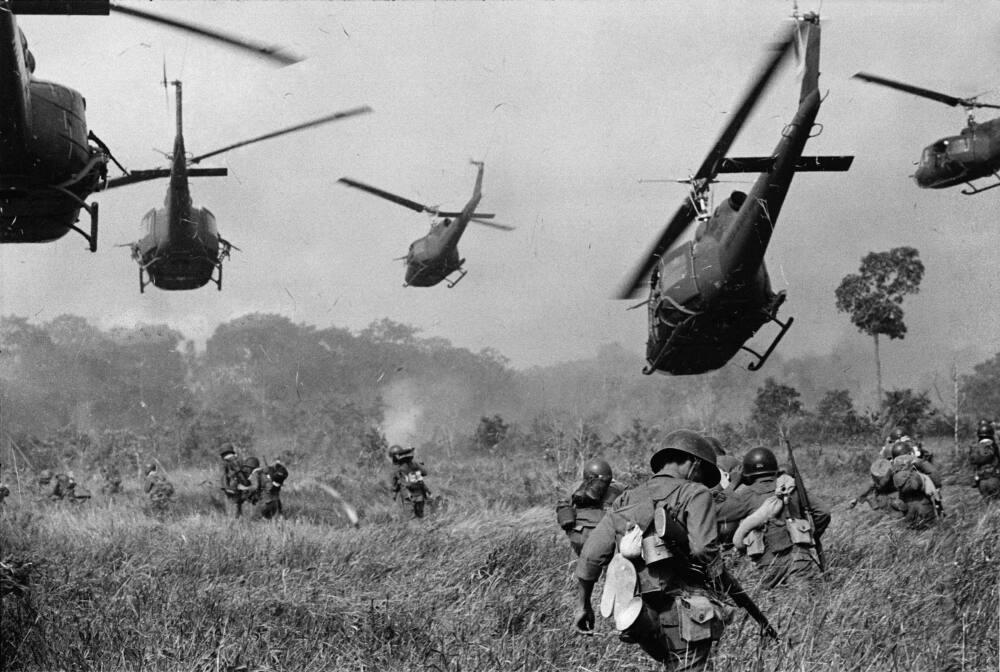ERA 9: Postwar United States (1945 to early 1970's)
First Blood In Vietnam, by Stanley Karnow
Guiding Questions
Why did the United States engage in the Vietnam War?
How did Vietnam affect future wars?
How was the Vietnam War different from and similar to other wars the United States has been involved?
Question Focus Example for Task 24: The Vietnam War highlighted the limitations of American military and morality.

US Army helicopters fire into the tree line to cover South Vietnamese ground troops in March 1965
Teacher-to-Teacher
Karnow was there at the beginning of the war, and by some estimates, has written the definitive book on this war. Karnow’s brief article is a simple way for students to dip their toes into what would become the Vietnam War. A seemingly isolated incident will serve as the ‘shot heard ‘round the world’ for U.S. involvement in the Vietnam War. Students can look at the Vietnam War, a hot war lasting approximately ten years, through the larger context of the Cold War that spanned over four decades long. Consider asking students to search for other iconic images of the Vietnam Era, such as the Napalm Girl, Burning Monk, Pentagon protests and Kent State among others, many of which are not in public domain but can be used by individual teachers to tell the story of Vietnam. In addition, students can examine comparisons made between Vietnam and Iraq and the final document’s links to military action related to the 1973 War Powers Resolution. Note: “The War Powers Resolution-After Thirty Years” does not contain the full text as it is very long. Please consider using the links to events in which the War Powers Resolution was challenged or named to further discuss the impact of Vietnam on the American presidency and military.
Literature Connection: Poem by Muriel Rukeyser, Going After Cacciato by Tim O’Brien

